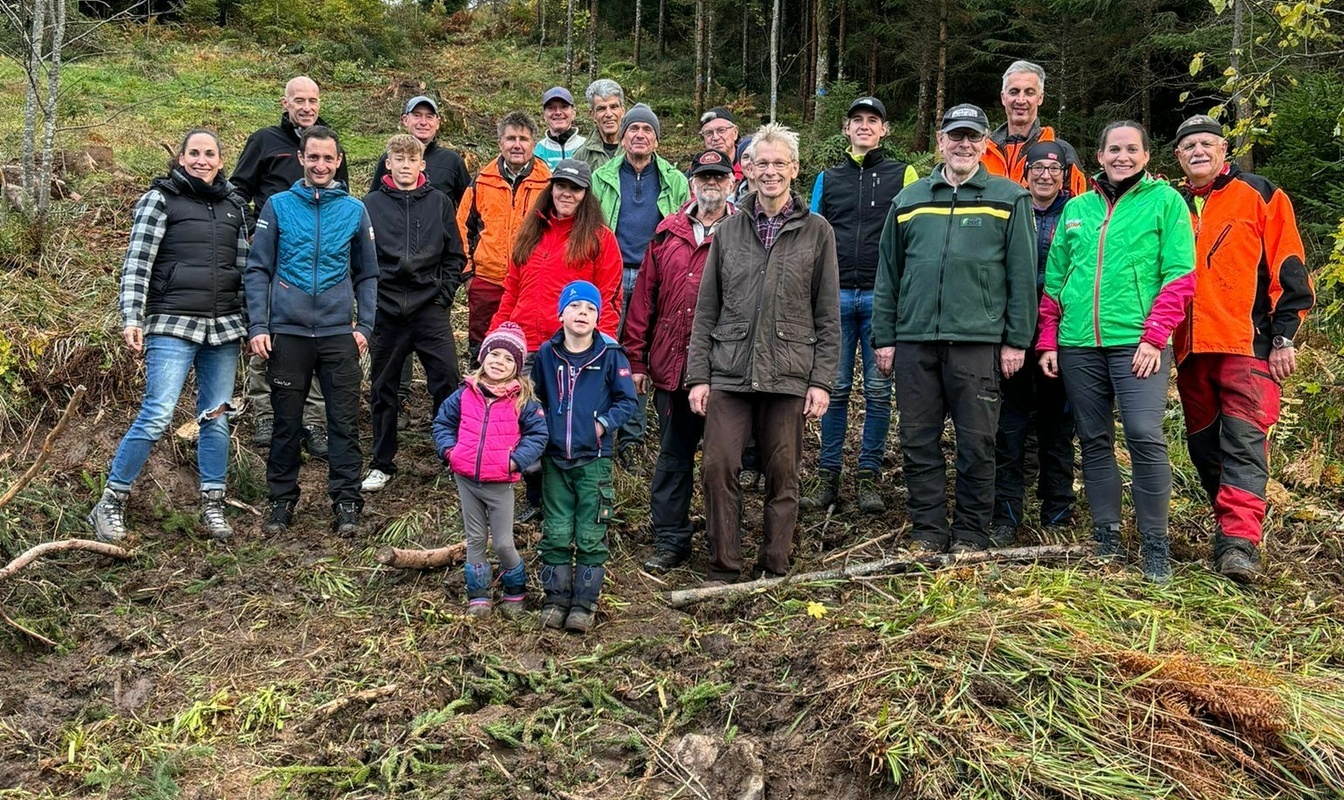04.11.2024
Mountain Bikers as Foresters and Foresters as Mountain Bikers

Anyone who organizes one of Europe’s largest mountain biking events, like race director Sebastian Eckmann and managing director Britta Schreiber, must be a true all-rounder these days. The two, along with their team, need to understand not only what athletes want before (participant gifts/pasta party), during (course options/refreshments), and after the race (refreshments at the finish line), but they must also mark and secure the routes for the Black Forest ULTRA Bike and coordinate the support of 1,650 volunteers. In the days leading up to the event, they also organize the Bambini Trophy for the youngest riders, side events, youth races for children from the age of seven, as well as, more recently, two gravel rides of varying lengths for recreational riders. Since the mountain bike routes cross private meadows and both private and state forests, all of this can only be done in harmony with nature and wildlife conservation. Communication with private individuals and authorities is therefore essential and important. However, even with all these responsibilities, the to-do list for the ULTRA Bike organizers is far from complete.
One annual tradition has become a joint effort that benefits the capercaillie, a threatened resident bird species: the maintenance of the habitat for the capercaillie, also known as capercaillie habitat management. Initiated by the ULTRA Bike leadership, this event took place for the tenth time this year. The ULTRA Bike team, consisting of ULTRA Bike participants, organizational committee members, and members of the ULTRA Bike route associations, met with Iso Schmid, Hans-Ulrich Hayn, and Hansjörg Frei, all three from the Baden-Württemberg State Forestry (ForstBW), to prepare a forest area for the capercaillie in the St. Wilhelmer Valley. “It was a really productive event,” says Hans-Ulrich Hayn, head of the Upper Black Forest Forestry District. “When 23 people work together, a lot can get done.” The forest area, for which Iso Schmid is responsible, was prepared by ForstBW members by felling larger trees and sawing off branches. “We then removed branches and smaller trees in the area to create optimal conditions,” explains Britta Schreiber. “The capercaillie has excellent vision but poorer hearing. A more open and visible space helps the bird spot predators earlier.” According to Hayn, thanks to such and other conservation efforts, the capercaillie population has increased in recent years. “We only count the male capercaillie, as the hens stay hidden,” he adds. In fact, a wildlife camera in the St. Wilhelmer Valley has captured images of not only the usual suspects like deer, foxes, and hares but also badgers, wolves, lynxes, wildcats, and capercaillie.
Hayn believes the joint action over several hours dispelled two common misconceptions: “That foresters have something against mountain biking in general and the ULTRA Bike event in particular, and, conversely, that mountain bikers have something against the capercaillie.” For the former, Hayn and Frei themselves are proof, as both have actively participated several times in the mountain bike marathon event in Kirchzarten, as have the children of forester Schmid. Meanwhile, 20 people connected in one way or another with the ULTRA Bike supported the foresters and helped prepare the forest area.
ULTRA Bike managing director Britta Schreiber emphasizes, “We stand for a sustainable event. We want to do something positive for nature and wildlife.” This commitment has once again been exemplified in the joint initiative between ULTRA Bike and ForstBW. Interaction goes both ways here: mountain bikers occasionally turn into foresters, and foresters are happy to hop on their mountain bikes.
One annual tradition has become a joint effort that benefits the capercaillie, a threatened resident bird species: the maintenance of the habitat for the capercaillie, also known as capercaillie habitat management. Initiated by the ULTRA Bike leadership, this event took place for the tenth time this year. The ULTRA Bike team, consisting of ULTRA Bike participants, organizational committee members, and members of the ULTRA Bike route associations, met with Iso Schmid, Hans-Ulrich Hayn, and Hansjörg Frei, all three from the Baden-Württemberg State Forestry (ForstBW), to prepare a forest area for the capercaillie in the St. Wilhelmer Valley. “It was a really productive event,” says Hans-Ulrich Hayn, head of the Upper Black Forest Forestry District. “When 23 people work together, a lot can get done.” The forest area, for which Iso Schmid is responsible, was prepared by ForstBW members by felling larger trees and sawing off branches. “We then removed branches and smaller trees in the area to create optimal conditions,” explains Britta Schreiber. “The capercaillie has excellent vision but poorer hearing. A more open and visible space helps the bird spot predators earlier.” According to Hayn, thanks to such and other conservation efforts, the capercaillie population has increased in recent years. “We only count the male capercaillie, as the hens stay hidden,” he adds. In fact, a wildlife camera in the St. Wilhelmer Valley has captured images of not only the usual suspects like deer, foxes, and hares but also badgers, wolves, lynxes, wildcats, and capercaillie.
Hayn believes the joint action over several hours dispelled two common misconceptions: “That foresters have something against mountain biking in general and the ULTRA Bike event in particular, and, conversely, that mountain bikers have something against the capercaillie.” For the former, Hayn and Frei themselves are proof, as both have actively participated several times in the mountain bike marathon event in Kirchzarten, as have the children of forester Schmid. Meanwhile, 20 people connected in one way or another with the ULTRA Bike supported the foresters and helped prepare the forest area.
ULTRA Bike managing director Britta Schreiber emphasizes, “We stand for a sustainable event. We want to do something positive for nature and wildlife.” This commitment has once again been exemplified in the joint initiative between ULTRA Bike and ForstBW. Interaction goes both ways here: mountain bikers occasionally turn into foresters, and foresters are happy to hop on their mountain bikes.





